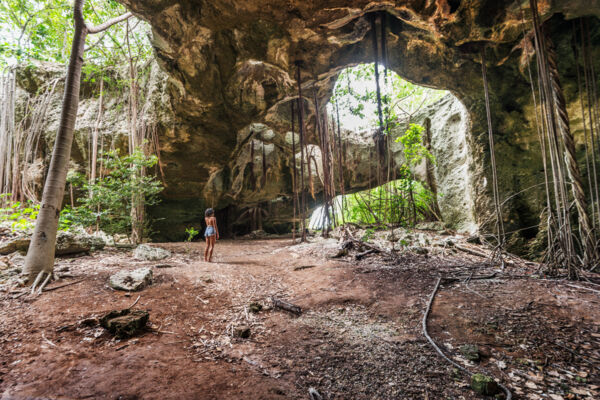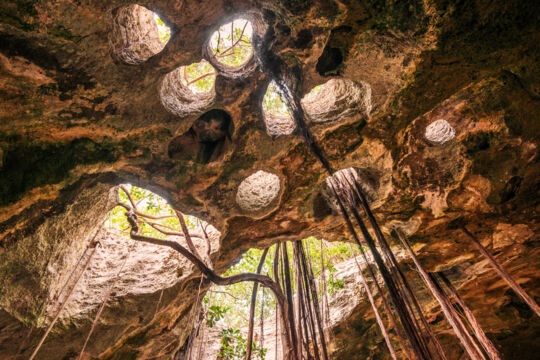Indian Cave
Middle CaicosIndian Cave is a large and beautiful single gallery cave with many openings and skylights. The attraction is located on Middle Caicos, and off of the primary road that leads into the island. Nearby is the popular beach and coast of Mudjin Harbour.
Like nearly all sinkholes and caves found in the Turks and Caicos, Indian Cave was created by what is called the Karst process: the slow action of slightly acidic rainwater dissolving the soft limestone as it drained to the water table.
Indian Cave will delight nature enthusiasts. Barn owls, bats, Cuban crows, yellow-crowned night herons, and smooth-billed anis often visit the area, and giant blue land crabs make their home in the soft damp floor of the cave. Along with many native plants, papaya trees, and the short-leaved fig grow at this formation.
Due to the ease of access and no entry fee, Indian Cave is definitely worth a quick visit.
History
Indian Cave has shown evidence of human habitation during pre-Columbus times, yet it’s not conclusively known if the cave was continually inhabited, or if it was only used as a shelter during storms or for some other special purpose.
Archeological digs conducted here in the late 1990s have revealed many interesting findings. Along with some shards of ancient pottery, bones and fossils of quite a few animals were uncovered, including an extinct tortoise and giant iguana, small reptiles, owls, parrots, and hawks. The decay of the bones suggests that the tortoise was alive on Middle Caicos within the last few centuries.
Indian Cave is a protected area. Please don’t deface the cave with inscriptions or graffiti. Please do not take any natural or historical objects.





